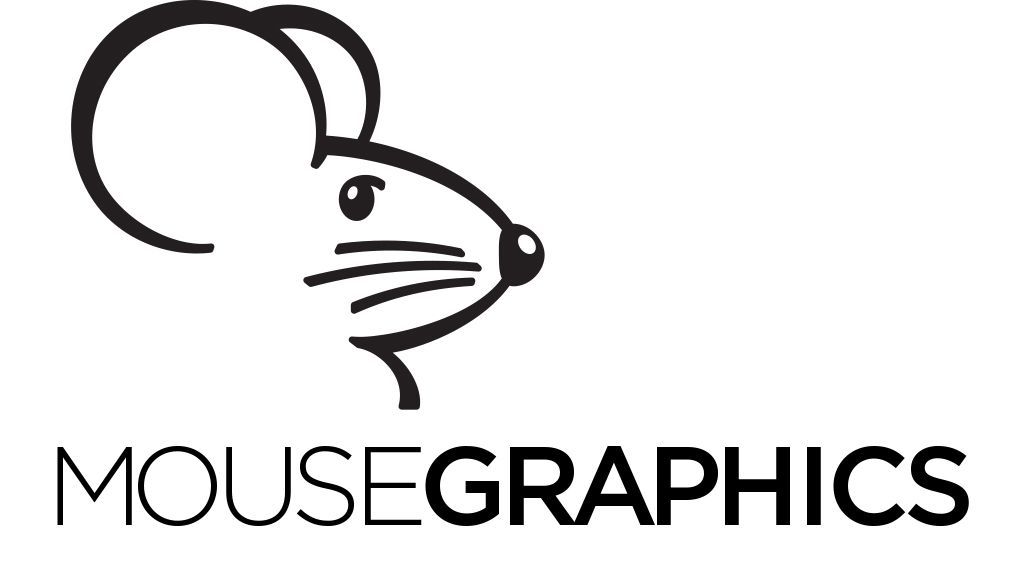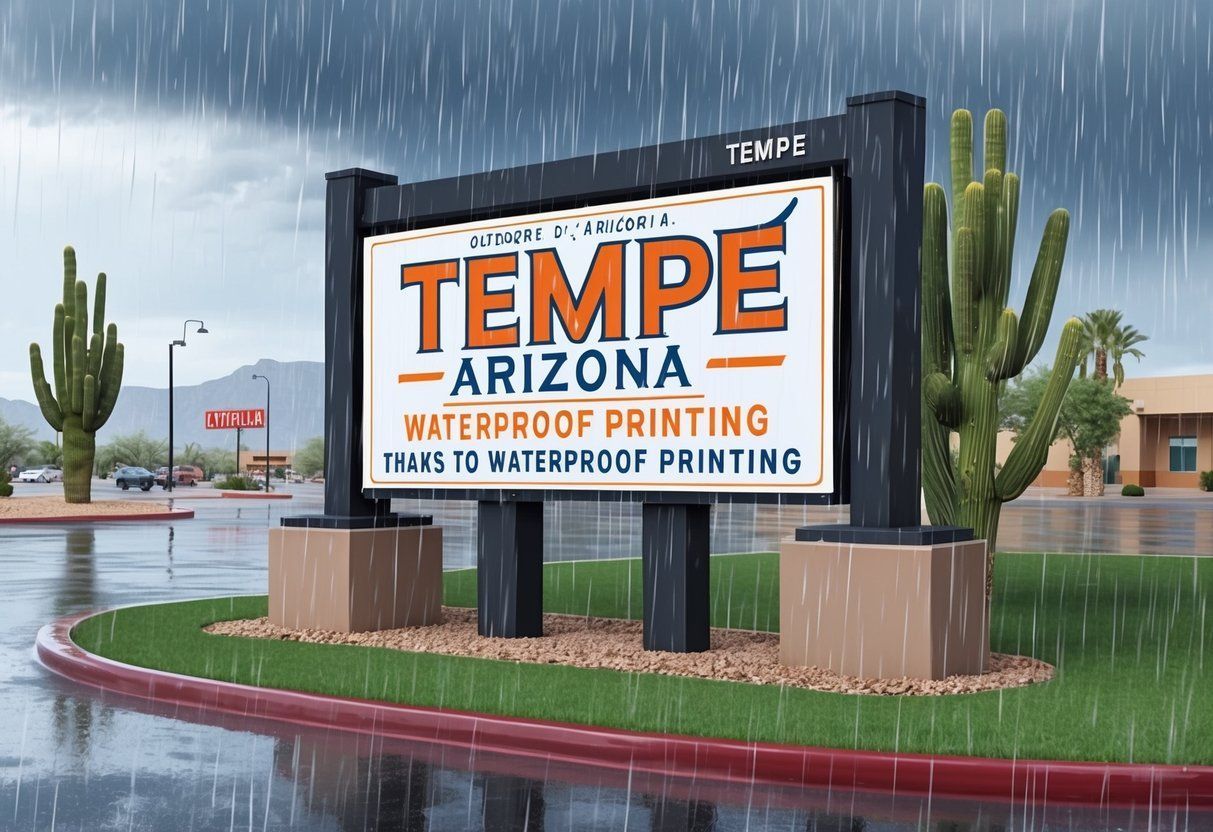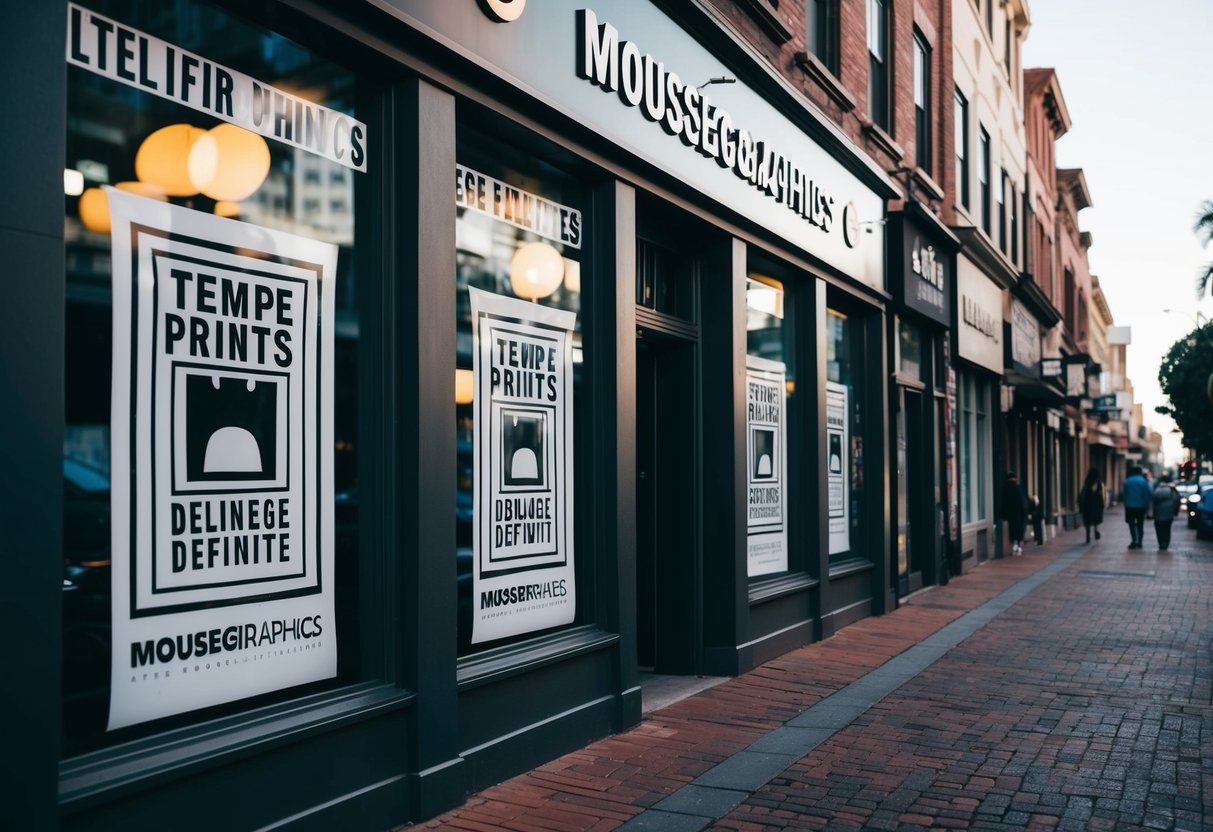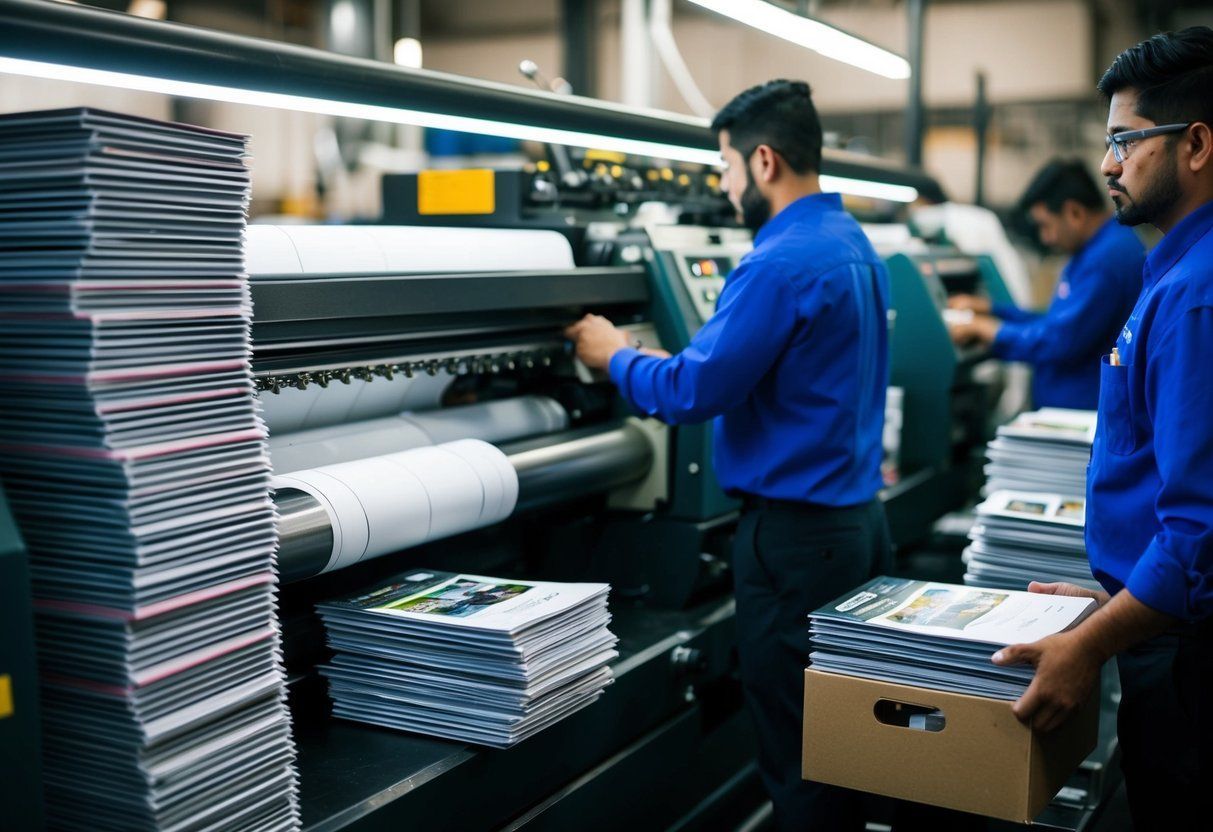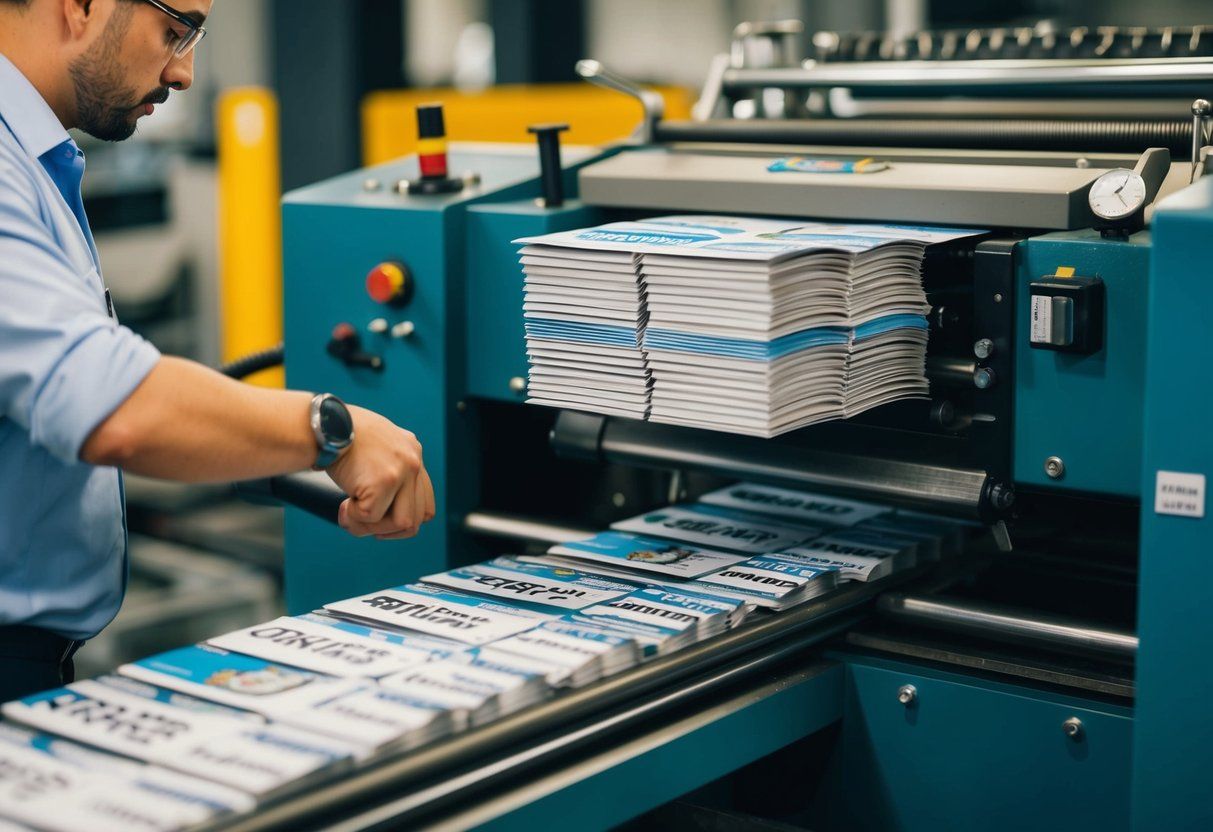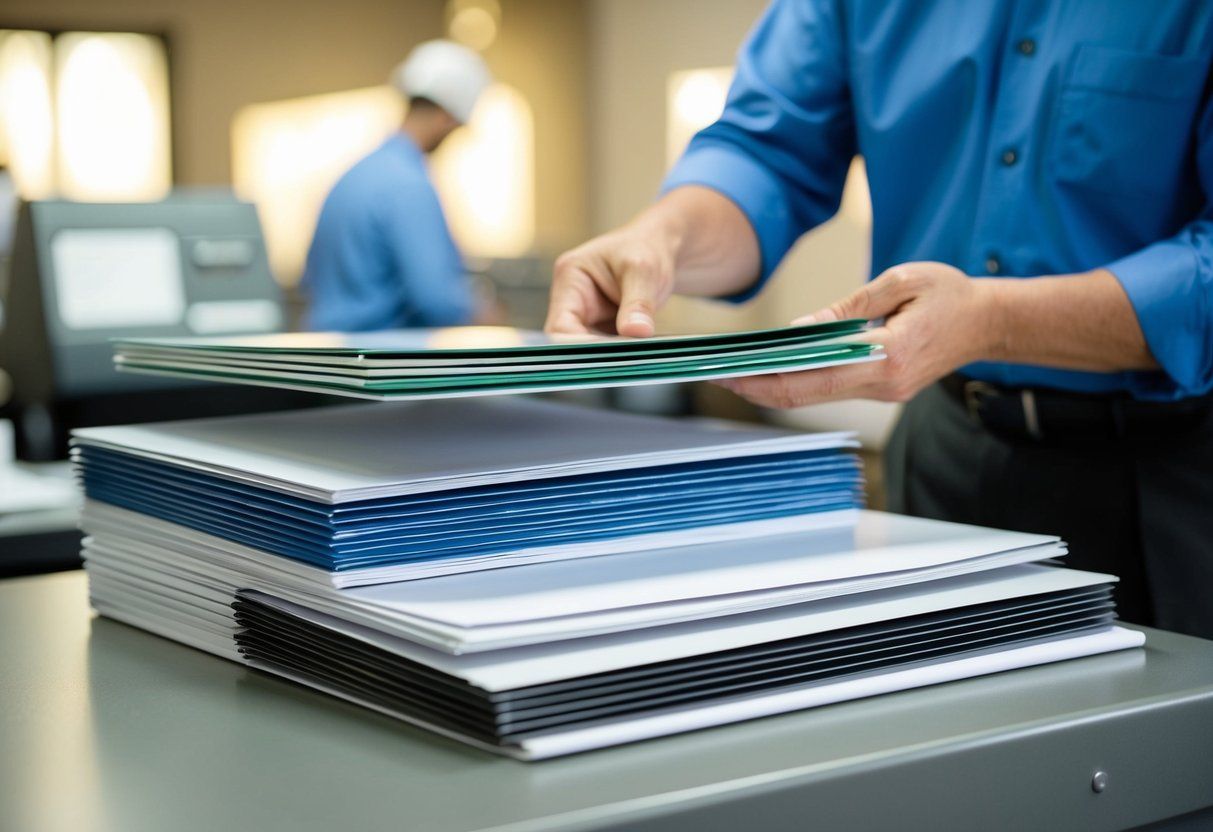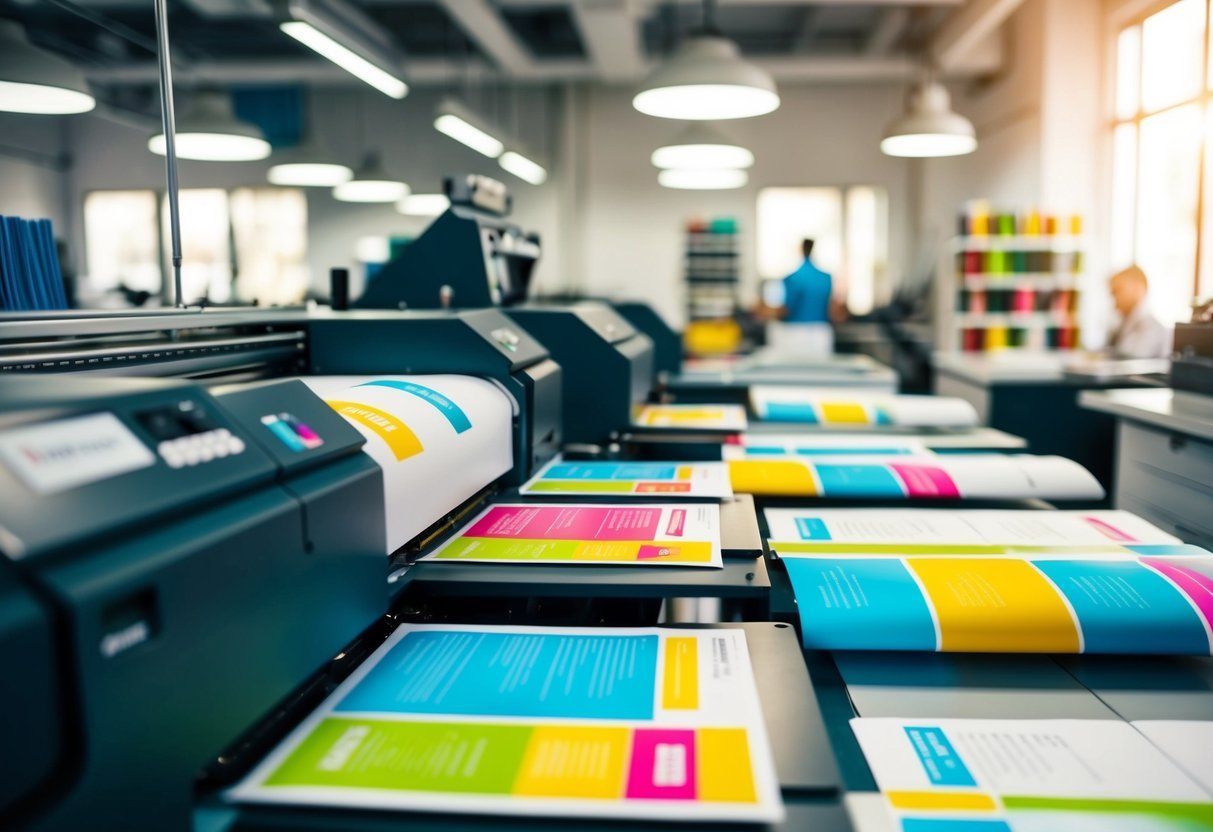Why Single-Use Menus Are a Smart Choice for Restaurants Post-Pandemic: Enhancing Safety and Efficiency
As restaurants adapt to changes after the pandemic, many are turning to single-use menus. This approach not only improves hygiene but also meets the evolving demands of consumers who prioritize safety and convenience.
Single-use menus can enhance the dining experience while addressing labor shortages and offering new technological solutions.
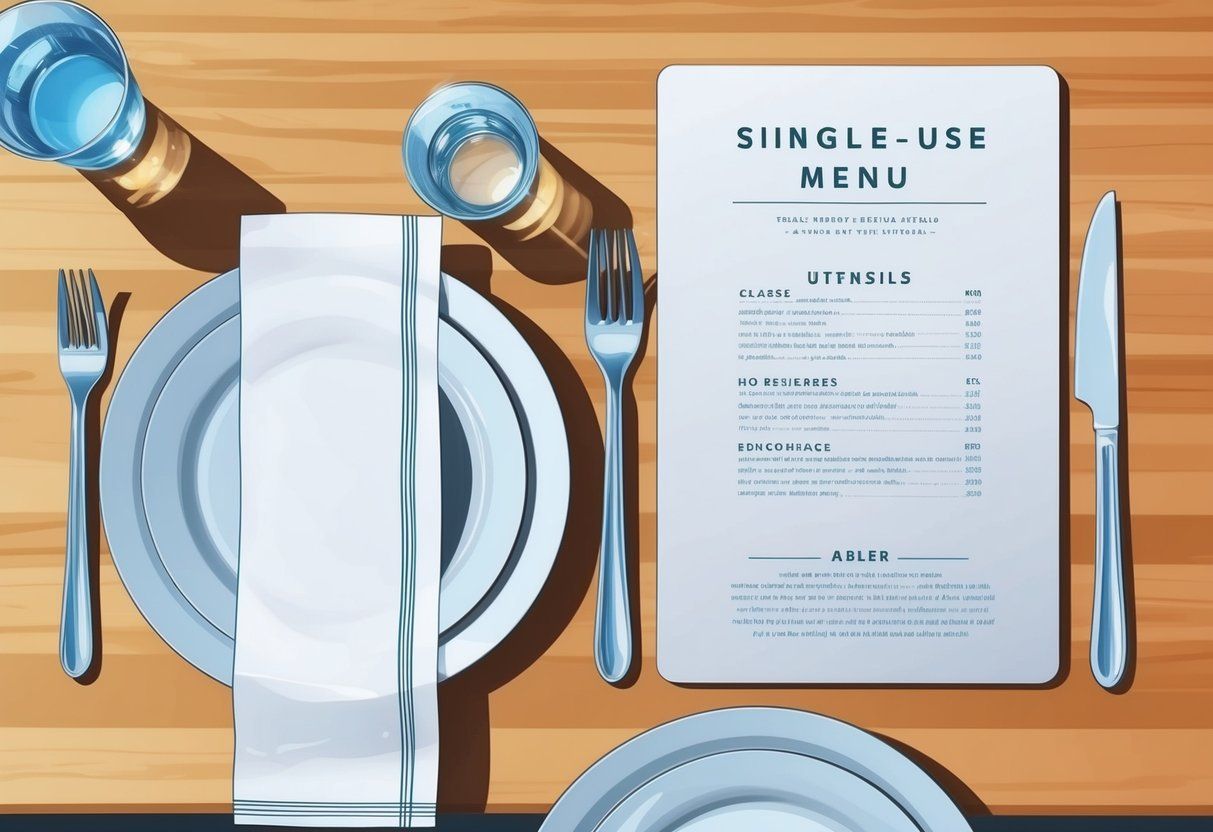
With digital options becoming more common, these menus are easier to manage and update, allowing restaurants to respond quickly to trends.
They also reduce the spread of germs, making customers feel safer.
The shift towards single-use menus reflects a broader change in consumer behavior and expectations in the restaurant industry.
By implementing single-use menus, restaurants can streamline operations and cater to the needs of the modern diner. This innovation can lead to increased satisfaction and loyalty from customers who appreciate both safety and simplicity.
Key Takeaways
- Single-use menus enhance hygiene and safety for diners.
- Digital options streamline menu updates and operations.
- The shift to single-use menus aligns with changing consumer expectations.
The Evolution of the Restaurant Industry Post-Pandemic
The restaurant industry has changed significantly since the pandemic. These changes include new consumer behaviors and the increased use of technology in services.
Restaurants are finding ways to enhance customer experience while ensuring safety.
Adapting to New Consumer Behaviors
The pandemic forced many customers to rethink how they dine out. People now prioritize health and safety. This leads to a preference for less crowded spaces and outdoor seating.
Many diners also expect more cleanliness and hygiene practices from restaurants.
Takeout and delivery services grew during this time. Customers became comfortable with ordering online, which increased demand for efficient systems.
Restaurants began to offer more options for contactless service. This shift created a need for improved digital menus and faster payment methods.
Transition from Traditional to Tech-Enhanced Servicescapes
With changing consumer demands, many restaurants adopted new technologies. They installed digital ordering systems and contactless payment methods.
These tools streamline the dining experience and reduce wait times, which customers appreciate.
Restaurants also focused on their physical spaces. Creating inviting, safe environments is essential. They redesigned layouts to allow for better social distancing, while incorporating technology to enhance the atmosphere.
Smart technology, like QR codes for menus, became popular. This supports both safety and convenience. As a result, diners enjoy a smoother experience while feeling secure in their dining choices.
Benefits of Single-Use Digital Menus
Single-use digital menus offer clear advantages for restaurants in the wake of the COVID-19 pandemic. They enhance customer safety, reduce costs, and improve accessibility. These benefits make digital menus a strong choice for businesses looking to thrive in a changing environment.
Enhancing Customer Safety and Trust
Single-use digital menus help boost safety by minimizing contact points. By allowing customers to scan a QR code with their phones, they can view the menu without touching a physical object.
This decreases the risk of spreading germs, which is especially important after the pandemic.
Transparency about safety measures can also increase trust. Customers appreciate knowing that restaurants take their health seriously. This trust can lead to repeat business, as satisfied customers often return.
Reducing Overhead and Boosting Efficiency
Digital menus can lower costs for restaurants. They eliminate the need for printing multiple, physical menus, which can add up over time.
Restaurants can easily update their digital menus, saving both time and resources.
Efficiency also improves when staff can quickly update items as needed. If a dish runs out or there is a new special, changes can happen in real-time.
This flexibility can enhance the dining experience for customers and streamline operations.
Facilitating Accessibility and Inclusivity
Single-use digital menus improve accessibility for diverse customer needs. They can be designed to adjust font sizes or include screen readers for visually impaired guests. This feature ensures everyone can comfortably read the menu.
Moreover, digital menus can be offered in multiple languages. This inclusivity helps attract a broader range of customers, making everyone feel welcome.
By catering to different needs, restaurants can enhance their reputation and customer satisfaction.
Technological Integration in Modern Dining Experiences
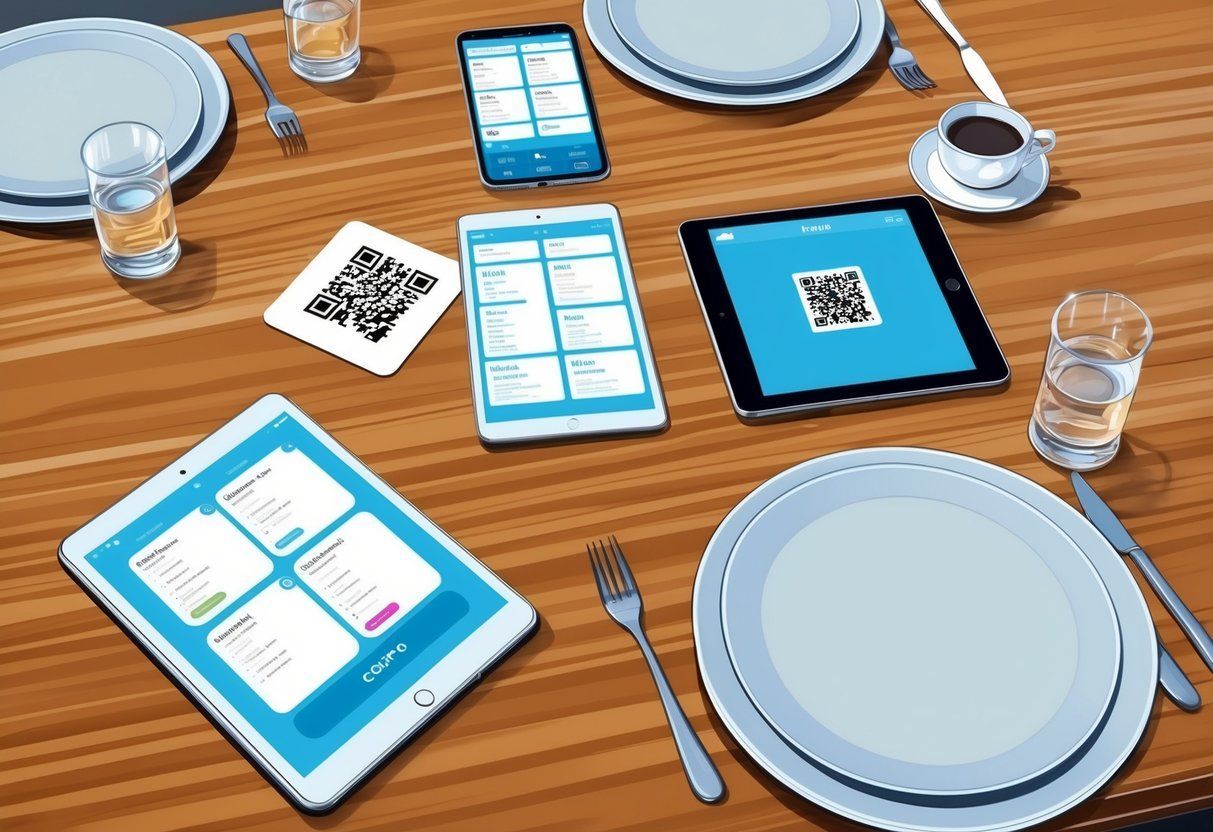
Technology has changed how restaurants operate and connect with customers. Many places now use tech tools to improve service, reduce waste, and enhance the dining experience. Key advancements in menus, payment systems, and service robots have made a big difference.
QR Codes Revolutionizing Menu Accessibility
QR codes are becoming a common sight in restaurants. They allow diners to view menus on their phones. This cuts down on the need for physical menus, which can help reduce the spread of germs.
Customers simply scan the QR code at their table. They instantly access the menu, including descriptions and prices. This ease of access improves the dining experience. It helps customers make quicker decisions about what to order.
Restaurants benefit too. They can easily update their digital menus. Changes can be made without printing new physical copies. This saves time and money for restaurant owners.
The Role of POS Systems in Streamlining Operations
Point-of-sale (POS) systems play an important role in modern dining. These systems help restaurants process orders quickly and accurately. They track sales, inventory, and customer preferences in one platform.
With a good POS system, staff spend less time taking orders. This allows them to focus on providing better service.
Fast order processing leads to quicker meal preparation and happier customers.
Furthermore, modern POS systems often integrate with inventory systems. This helps restaurants manage stock levels. It reduces waste by alerting managers when supplies are low. This can lead to cost savings.
Impact of Robotic Technology on Service Delivery
Robotic technology is changing how restaurants serve food. Robots can deliver meals from the kitchen to the dining area. This speeds up service times and reduces the workload for staff.
Some restaurants use robots for tasks like cleaning tables. This helps maintain a neat environment while allowing staff to focus on customer interaction.
Customers may find having a robotic server to be a fun and unique experience.
While robotic technology requires investment, it can also reduce labor costs. It provides a way for restaurants to operate efficiently.
Adopting robots in service delivery allows them to keep up with growing demand.
Strategies for Implementing Single-Use Menus
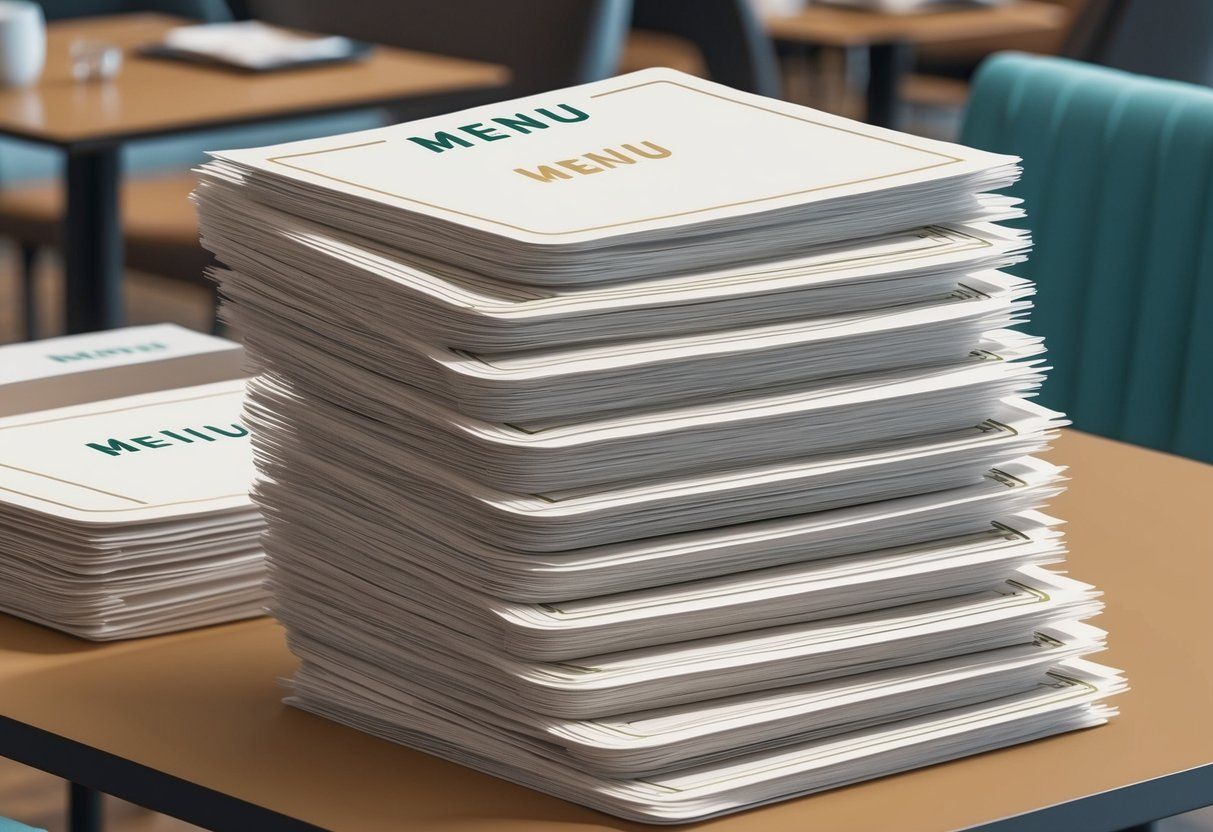
Single-use menus can enhance customer experience and improve safety. Careful design and smart use of media will help restaurants make the most of this option.
Designing for Impact and Engagement
When designing single-use menus, simplicity is key. A clean layout with clear categories makes it easy for customers to navigate.
Using bold fonts and high-quality images can attract attention and improve appeal.
Including QR codes can also enhance interaction. Customers can scan the code to view the menu on their phones. This reduces contact and allows for updates without printing new menus.
Restaurants should consider the size and material of the menu. A well-designed menu should invite customers to explore various items. Additionally, unique designs can reflect the restaurant’s brand and offer an engaging experience.
Leveraging Media and Ad Feedback for Menu Optimization
Using media and customer feedback is crucial for optimizing single-use menus. Online advertisements can promote menu items effectively. Track responses to these ads to see what draws interest.
Collecting feedback directly from customers can help refine offerings. Simple tools like surveys can reveal preferences. Addressing this feedback can lead to a more satisfying dining experience.
Restaurants can also utilize social media. Posting photos and specials can engage followers and generate buzz.
Keeping an eye on comments helps fine-tune the menu based on audience desires. Integrating these strategies will create a responsive and appealing menu.
Addressing Labor Shortages with Digital Solutions
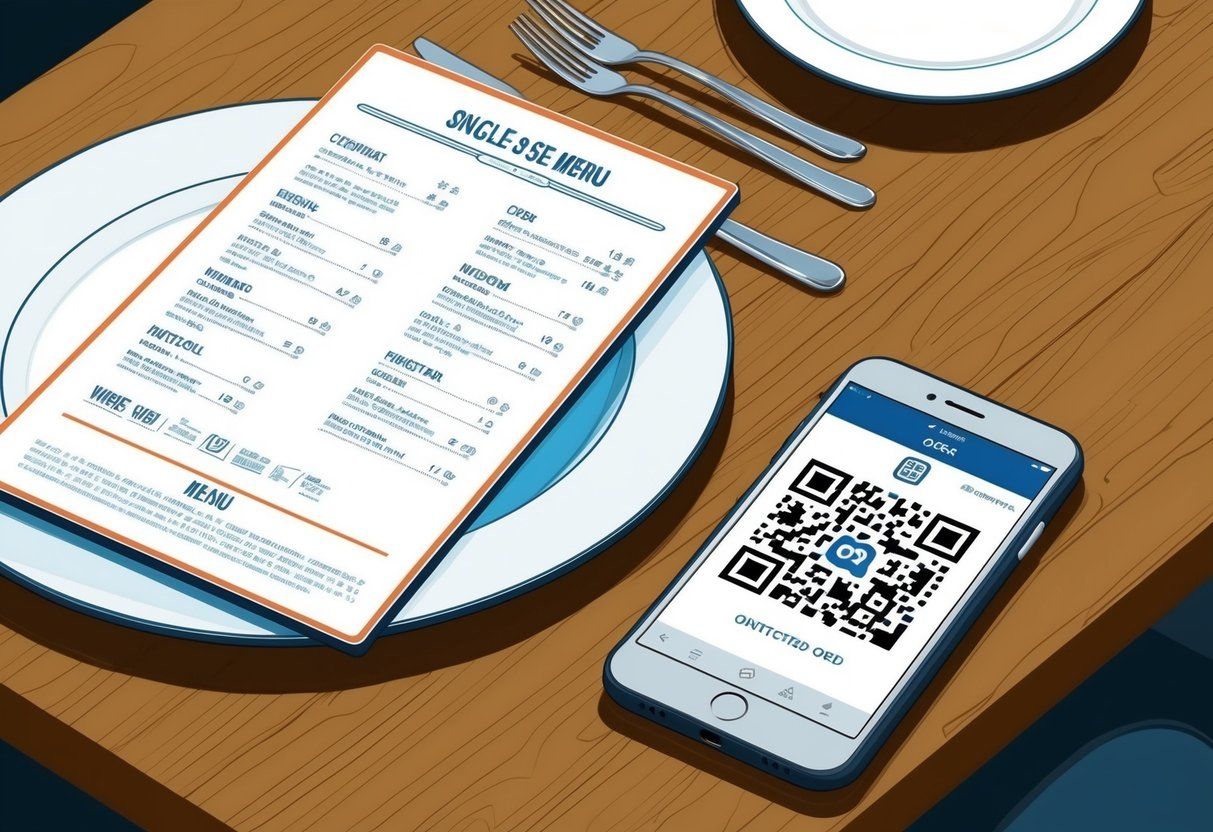
Many restaurants face labor shortages, making it hard to provide good service. Digital menus can help solve this problem.
With digital menus, customers can place orders using their smartphones or tablets. This reduces the need for waitstaff to take orders.
Staff can focus on bringing food to tables and ensuring a pleasant dining experience.
Robotics is another solution. Some restaurants use robots to deliver food to tables. This saves time and helps fill gaps left by fewer workers.
Introducing technology does not mean losing the human touch. Staff can still interact with customers while using digital tools. Here’s how digital solutions help:
- Efficiency: Faster order taking and processing.
- Accuracy: Reduces errors in order placement.
- Cost-effective: Saves money on hiring additional staff.
By adopting these solutions, restaurants can better manage labor shortages. They enhance service through technology while maintaining quality. This approach is helpful in the current restaurant landscape.
Examining the Environmental Implications
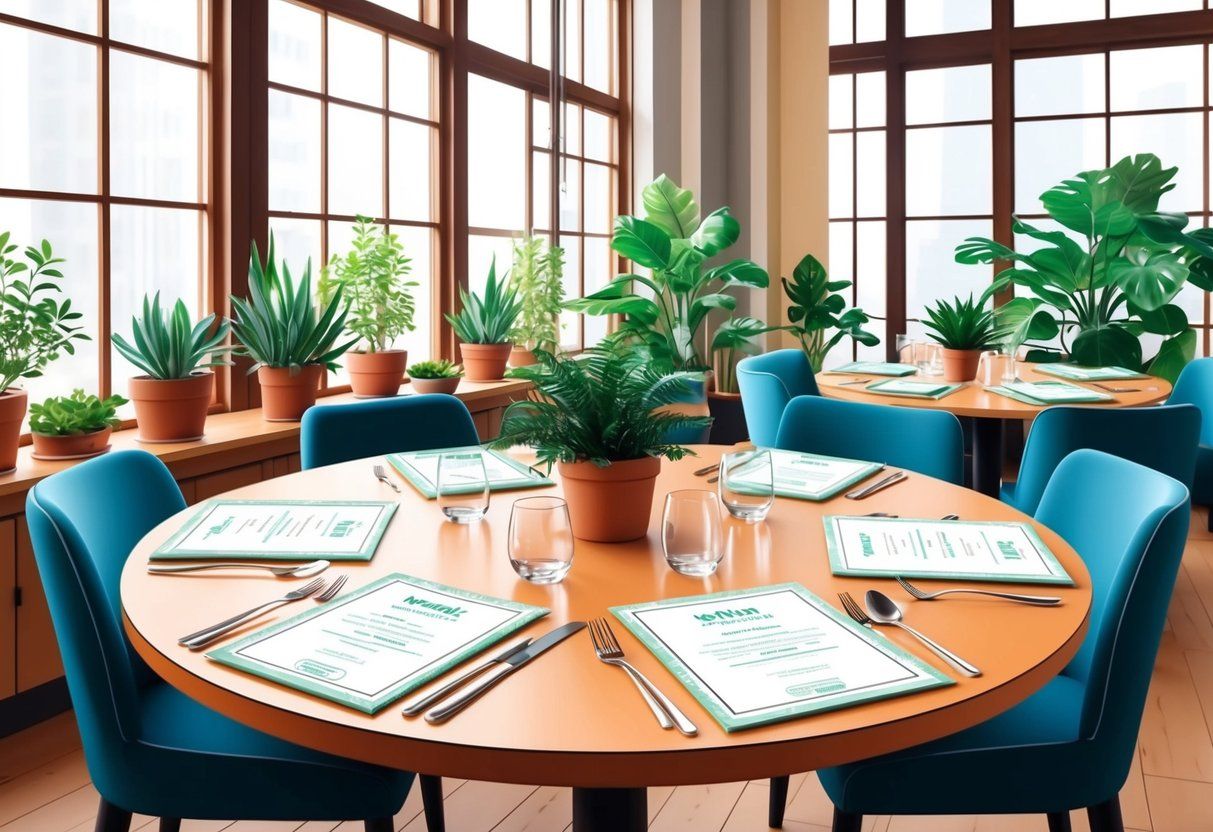
Single-use menus can help restaurants reduce waste and promote green practices. They offer a practical solution in the effort to minimize environmental impact while maintaining hygiene standards.
Comparing to Traditional Paper Menus
Traditional paper menus create a lot of waste. Restaurants often throw away menus that get damaged or become outdated.
In contrast, single-use menus can be made from recycled materials or biodegradable substances.
Using digital menus also further reduces paper waste. Customers can access these menus on their smartphones. This shift lowers the need for printed materials and contributes to a cleaner environment.
Benefits of Single-Use Menus:
- Less paper waste
- Use of recycled or compostable materials
- Flexibility to change offerings without printing new menus
These factors show that switching to single-use options can significantly lessen the environmental burden compared to traditional methods.
Promoting Environmentally Friendly Practices
Restaurants implementing single-use menus can focus on sustainability. Many establishments use eco-friendly materials that reduce their carbon footprints. This aligns with consumer preferences for healthier options and greener practices.
By opting for digital menus, restaurants minimize printing altogether. This saves ink and paper, contributing further to environmental efforts.
Key Actions for Restaurants:
- Choose biodegradable or recycled menu materials
- Encourage customers to use mobile phones for digital menus
- Commit to reducing plastic and waste in other areas
Such practices not only appeal to eco-conscious diners but also showcase the restaurant’s commitment to the environment.
New Restaurant Concepts and the Rise of Virtual Brands
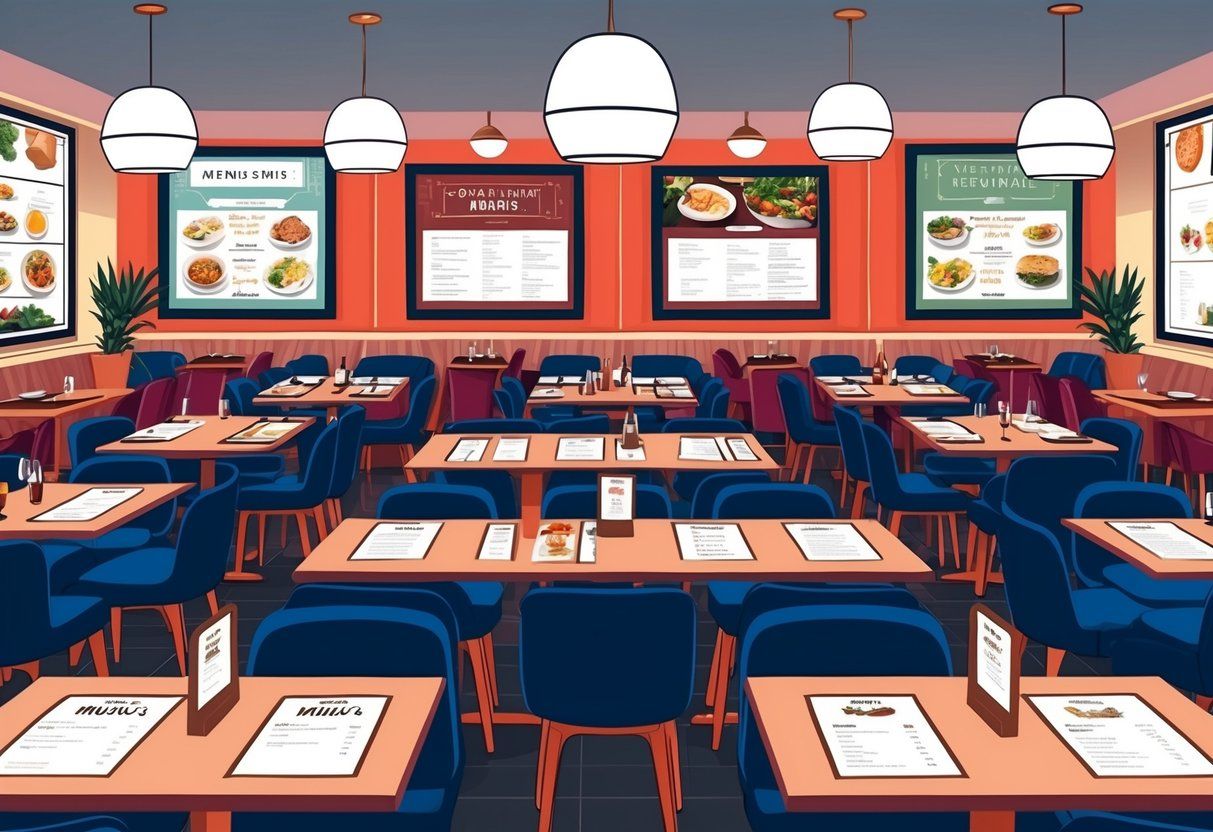
Many restaurants are changing their business models to adapt to new consumer habits. This shift includes the development of ghost kitchens and the rise of virtual brands, which offer a fresh way to reach customers. These concepts leverage technology and delivery services to maximize efficiency and profitability.
Advent of Ghost Kitchens in a Digital Age
Ghost kitchens are professional cooking spaces that do not have a storefront. They exist only to prepare food for delivery.
This model significantly reduces overhead costs because they do not need to invest in a physical dining area.
Restaurants can easily create multiple brands from one kitchen, saving space and resources.
For instance, a single ghost kitchen might serve Italian food under one brand and Mexican food under another. This flexibility allows them to cater to various tastes without the traditional risk.
The pandemic pushed many restaurants to explore ghost kitchens. They provided a way to keep operations running even with dine-in restrictions.
Integration with Delivery Apps and Services
Delivery apps have become essential for restaurants in this new landscape.
Services like DoorDash, Uber Eats, and Grubhub connect customers with ghost kitchens and virtual brands.
These platforms offer easy access for consumers looking for diverse meal options.
Restaurants can market multiple virtual brands on these apps without large investments.
By using delivery services, restaurants can increase their reach in urban areas where dining options are plentiful. This strategy enhances convenience for customers, who can enjoy meals from various concepts all in one order. In this way, restaurants not only adapt but can thrive in a competitive market.
Frequently Asked Questions
There are many common questions about single-use menus in restaurants after the pandemic. This section addresses key topics like health standards, costs, customer experience, and best practices.
How have single-use menus improved health and safety standards in restaurants post-pandemic?
Single-use menus help reduce the spread of germs. Since they are used only once, they minimize contact points between customers. This change supports better hygiene and builds customer trust in dining safety.
What are the cost implications of switching to single-use menus for a typical restaurant?
Switching to single-use menus involves initial costs for purchasing materials. However, these costs can balance out by reducing cleaning and damage to reusable menus. Over time, restaurants may find savings in staffing and sanitation efforts.
In what ways do single-use menus streamline the dining experience for customers?
Single-use menus simplify the ordering process. They are easy to handle and promote quick decisions. This clarity can enhance customer satisfaction as they enjoy a smooth dining experience.
Are there environmentally friendly options available for single-use menus?
Yes, many companies offer eco-friendly single-use menus made from recycled materials. Some options are biodegradable or compostable. Restaurants can choose these alternatives to reduce their environmental impact.
How do single-use menus compare to digital menus in terms of customer acceptance?
Customer acceptance of single-use menus remains strong. Some diners prefer physical menus for ease of use. Digital menus have their benefits, but traditional menus still appeal to many customers, especially those uncomfortable with technology.
What best practices should restaurants follow when implementing single-use menus?
Restaurants should ensure that single-use menus are designed thoughtfully. They should be clear, easy to read, and visually appealing.
Training staff to explain the benefits can also enhance customer comfort with this new practice.…

Yard Sign Printing from Us at Mousegraphics in Tempe: Your Go-To Solution for Quality Custom Signage
Ready to get started?
All Rights Reserved | Mousegraphics
